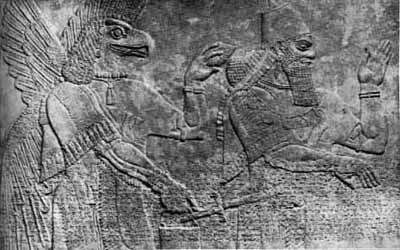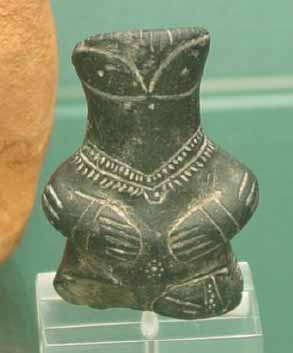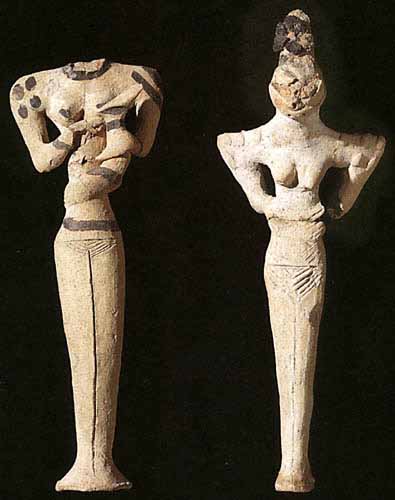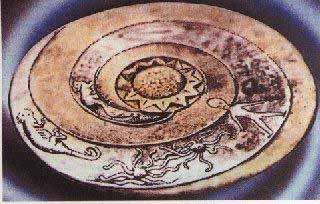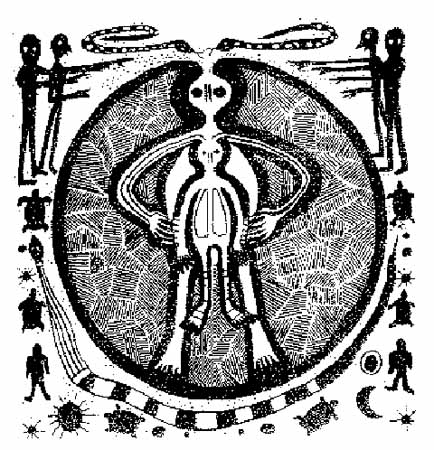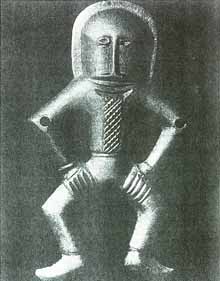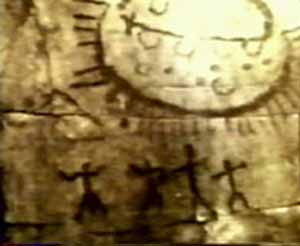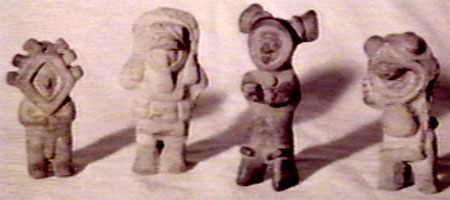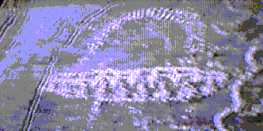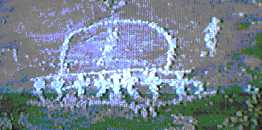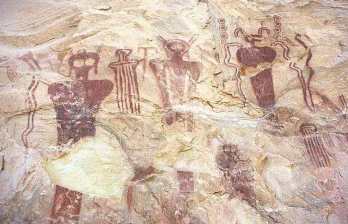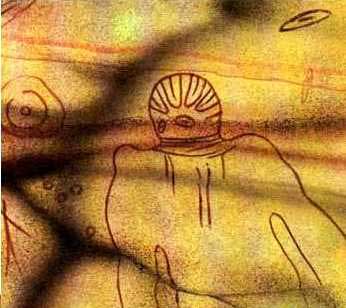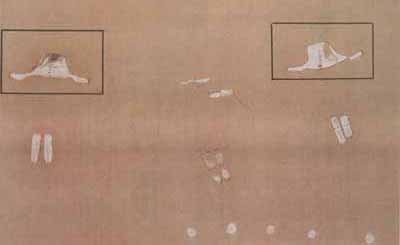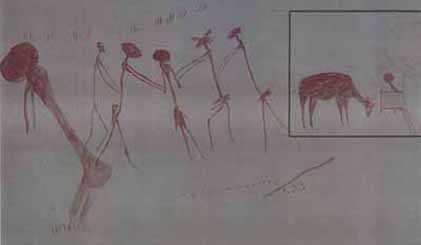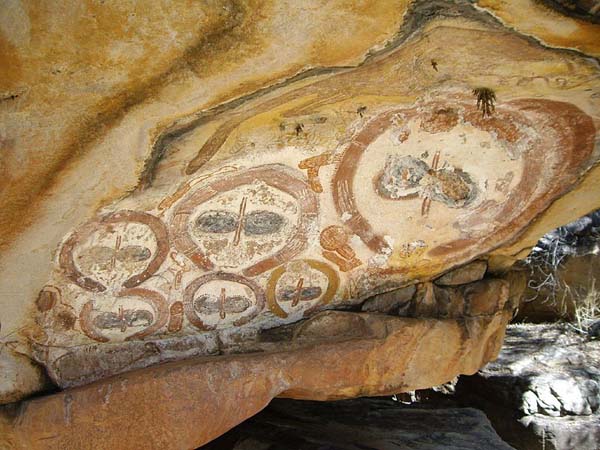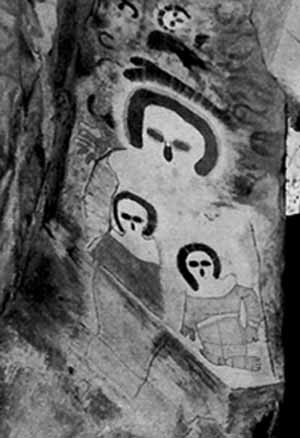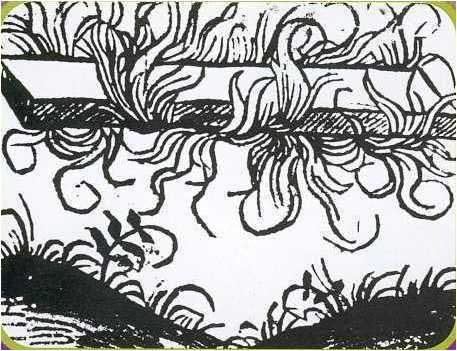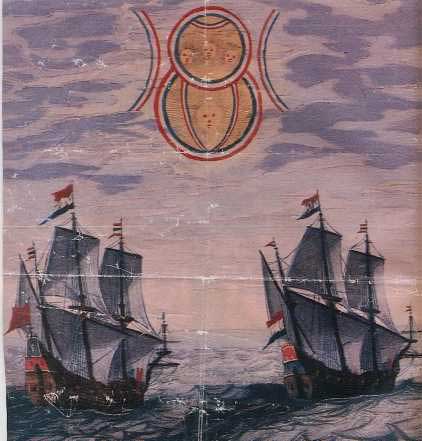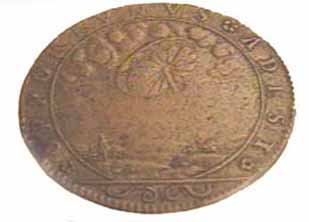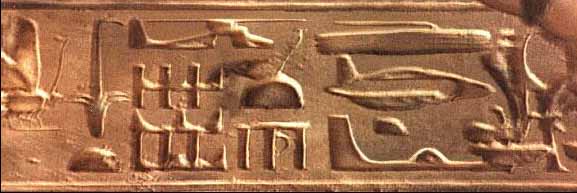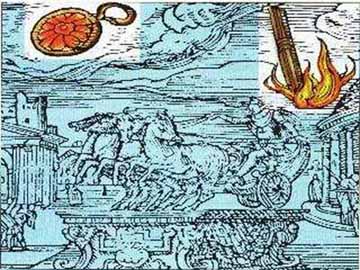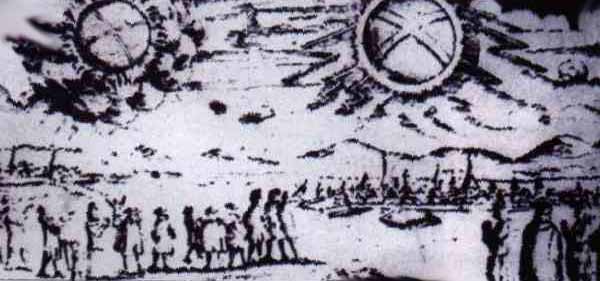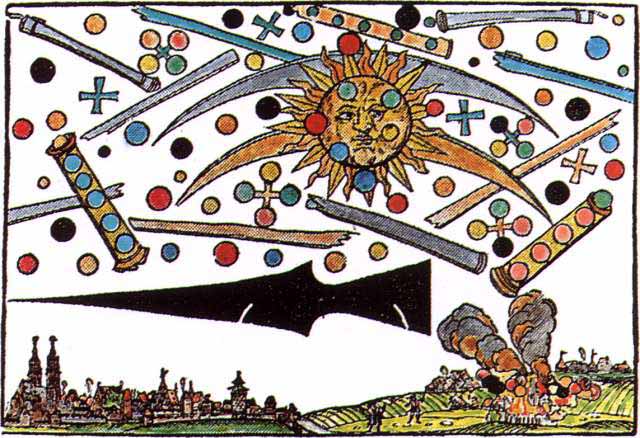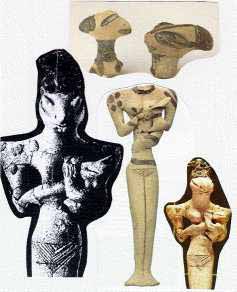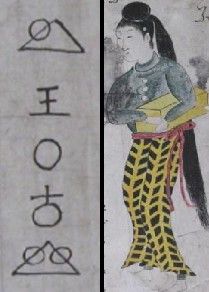"Revealing the True Colors of NASA …."
By Richard C. Hoagland
© 2002 The Enterprise Mission
The above color images of Mars were taken in 1999, across almost 60 million miles (!) by a talented amateur astronomer in Oeiras, Portugal --
Antonio Cidadao. They were acquired with a modest 10-inch "Schmidt-Cassegrain" reflecting telescope, and a commercially available CCD (charge coupled device) camera. Mr. Cidado’s total investment in his "Mars imaging system" – commercial telescope and electronic camera, plus computer to process the images, and the appropriate software -- was approximately three thousand American dollars ….
To get a feel for Mr. Cidadao’s remarkable accomplishment, examine the following professional color comparisons.
The Observatory image (below, right) was acquired in 1956 by Dr. Robert Leighton of the California Institute of Technology, using Mt. Wilson’s famed 60-inch reflector. It was a 20 second exposure on Kodachrome color film, subsequently processed by the Institute’s well-known research laboratory, "JPL." The comparison image (below, left) is one of Cidadao’s 1999 Mars series shown above, when the Red Planet was almost twice as distant as in 1956. It was a combination of two images, exposed through red and blue filters for .2 seconds each – one tenth the Kodachrome exposure! An "averaged" green image was subsequently created, and the three images composited to produce the final color view.

What’s remarkable about this comparison is that Antonio Cidadao’s amateur CCD image has comparable detail, buttruer color (based on the reciprocity failure of the three-layered color film under long exposures, and visual telescopic observations by this writer and others) -- compared to the professional "Leighton image," taken (at the time) through the world’s third largest telescope … 46 years ago.
A comparison of the sheer physical size of the two instruments (below) is even more revealing.
That planetary images of the quality of Cidadao’s 1999 Mars record could have been acquired with such a relatively small instrument – only one sixth the mirror size of its professional counterpart -- is remarkable. That it could produce images better than the 60-inch Mt Wilson instrument, and when Mars was almost twice as far away as in 1956, is elegant testimony to the starling advances in the "computer-driven technology of astronomical photography" – and its democratization within the amateur astronomical community – that have occurred in only fifty years ….
Which brings us to NASA … and the strange tale of
its color imaging of Mars.
As every space aficionado knows, the Space Agency has another unmanned spacecraft currently orbiting the Sun’s fourth planet, called "2001 Mars Odyssey." Odyssey carries an incredibly sophisticated, one-of-a-kind, solid-state CCD imaging system known as "THEMIS" -- capable of returning both
thermal infrared AND "
natural color" images of Mars from a ~250 mile orbit. According to official Odyssey
documents.
"THEMIS will also acquire 20-m resolution visible images in up to 5 spectral bands. Over 15,000 panchromatic (3,000 5-color), 20 × 20-km images will be acquired for morphology studies and landing site selection."
The cost of this latest NASA spacecraft -- including launch vehicle, control center, tracking system, and ground personal (engineers and scientists) required to acquire and analyze these close-up Mars images -- is several orders of magnitude greater than Mr. Cidadao’s modest astronomical investment … on the order of ~300 million dollars. Yet, in stark contrast to Antonio Cidadao’s obvious success in repeatedly taking, computer processing, and then posting his spectacular color Mars images worldwide on the Internet—
In the entire year that Mars Odyssey has been in orbit, the much more extensively-endowed NASA-THEMIS team has yet to process and release—
Even
one of those ~3,000 … 5-color Mars Odyssey images!
* * *
Mars Odyssey arrived at Mars on October 24, 2001. It began its official "science mission" on February 18, 2002.
Within a few weeks (March 27, 2002) of that beginning of the "official" Mapping Mission, the THEMIS team established (with great fanfare, including a full
press release) an official THEMIS "Image of the Day" website -- to (in the words of one THEMIS manager) communicate "some of the excitement of what we're seeing with the public." However, almost 250 images later (as of December 8, 2002)--
NONE have been the "natural" color images everyone was told were the unique hallmark of
this mission!
For an Agency wanting – in fact, desperately
needing -- "good PR," especially after the debacle of losing
two Mars bound spacecraft back to back in
1999, this failure to put out even
one full color image of their first successful mission back to the "Red Planet" since those previous disasters is simply "inexplicable."
It was not until October 1, 2002, that we began to have some inkling as to ‘why" this apparent "failure" has continued.
For on October 1, NASA officially released almost two thousand Odyssey Mars images and other scientific data, acquired in the first six weeks of the official science mission, to the Planetary Data System (
PDS). Among these images were many apparent "full color attempts," made in those first six weeks with Odyssey’s "VIS System" (the visual color camera). These attempts, we duly discovered, were archived in both the PDS and ASU’s own
THEMIS data bank. However, upon downloading many of the B&W filtered images and attempting to create accurate color images through appropriate compositing, both we and independent investigators around the world ran into a host of "technical problems" ….
For instance,
Holger Isenberg, the well-known German independent investigator familiar to many readers here for the role he played a few months ago in the daytime Cydonia IR controversy, tried his talented hand at creating an initial real color image from this official THEMIS data ... and he failed (below).
It’s clear from even a cursory glance at his attempted reproduction of full color, that this representation is NOT yet suitable for "prime time"; in addition to the annoying overall "green cast" in the middle of the image, the anomalous additional colors and "lights" at both ends attest to severe "light scattering problems" within the VIS camera optical system. From examination of the individual B&W filtered images (below), it is readily apparent that this scattered light is the major constraint to producing any kind of quality color composite from these "raw," official images.
Isenberg’s only comment regarding his failed effort: "It is apparent that these images are still uncalibrated …."
More recently, in the general Mars discussion currently occurring at
MarsNews.com, "Bamf" – the notorious computer maven from ASU, who seems to be making a second career out of visiting various Internet bulletin boards and providing "ASU commentary" on the on-going Odyssey mission – was asked about the continuing lack of any "real color" from the Odyssey Mission:
[12:45] _Bamf_: Why has it taken so long to show color photos?
12:45] Because it's a hard job to make them.
[12:45] good question
[12:46] NASA should work hard.
[12:46] 
[12:46] _Bamf_: What makes it so difficult?
[12:47] _Bamf_: (In Lamen's [sic] terms, of course) 
[12:47] There's 3 or 4 really tough pieces:
[12:49] 1) Each color is taken about 1 second apart. This means that after you've taken the red picture, you have to wait for the spacecraft to travel a bit so you can take the blue image of the same part of the ground. This also means that the planet's rotated and the spacecraft's wobbled, and other things have occurred to make the pixels of the red image not line up with the pixels of the blue image. In addition to motion, different parts of
[12:49] the telescope distort the image differently, so you have to take out those effects too. This is all called geometric registration, and STILL isn't complete.
[12:51] _Bamf_: I take it that the 3 frames/sec is caused by compact video equipment?
[12:51] 2) The camera isn't perfect. There's several parts of the camera that suck, because it was mostly made from off the shelf parts. One of the really crummy parts is the black part of the detector array. When you snap a picture, you "shift" it to another part of the detector so you can read out the values. The "other" part of the detector is supposed to be completely opaque so additional light doesn't accumulate. In the wavelengths we use
[12:52] it's not opaque, so it accumulates more data from other parts of the planet.
[12:53] There's other stuff like this where stray light gets into the image that has to be taken out. This is called flat-fielding.
[12:53] (I'll get to your other question in a minute)
[12:53] bamf are there any plans for a probe with ground-penetrating radar/
[12:54] But the amazing part about the whole thing is you still get a photo...of Mars.
[12:54] 3) Each band has to be calibrated. This isn't all that hard, since the calibration coefficients were measured in the lab, but the camera doesn't have "red", "green" and "blue" filters, they're in other wavelengths, and converting them back to something you can view on your monitor is tough.
[12:54] _Bamf_: Please forget about my second question. I thought you were finished before. 
[12:55] nope
[12:55] Now: The frames/sec stuff is a little strange. We snap the whole array at once, which is 1 framelet in each band. 1 second later it does it again.
[12:56] Bamf is there any lag between you and the data? do you see it as soon as anyone/
[12:56] ?
[12:56] I don't think NASA is doing a ground penetrating radar. There was talk about it for the '05 orbiter, but it didn't get selected. The ESA Mars Express mission has one through.
[12:56] interesting
[12:56] We get it as fast as it comes down.
[12:58] _Bamf_: I am particularly interested in #3, the calibration. You mentioned use of 'calibration coefficients'. Would you mind elaborating on what exactly is used to calibrate the appropriate color bands?
[12:58] Monochromatic filters, ianao. In the lab you measure the spectral response to monochromatic light.
[12:59] You essentially map out the spectral response of the filters.
[12:59] _Bamf_: I see.
[12:59] Baby's running around, so I might disappear on short notice.
[12:59] I don't see.
[12:59] Will the coming war have any effect on your operations Bamf?
[13:00] Unlikely. There's not a lot of call for the 70m dishes in war operations.
[13:00] Interesting
[13:00] _Bamf_: Thanks for answering my question(s).
In this exchange, "Bamf" (in actuality, Noel Gorelick – remember, the official "software Manager for THEMIS data reduction at ASU") is confirming that "a major problem" exists with the reconstruction of accurate color images from Odyssey. Further, he’s specifically blaming the problem on the camera hardware.
" …there's several parts of the camera that suck, because it was mostly madefrom off the shelf parts. One of the really crummy parts is the black part of the detector array [emphasis added] …."
This is how an official NASA spokesperson for an on-going "make or break" NASA mission talks about "his" mission?!
What’s
really going on here?
In truth, "Bamf" is actually placing the blame not-so-subtly at the door of another NASA THEMIS scientist …. The surprise (to some) will be in "whom" that is.
Unlike the infrared components of the THEMIS camera (which were designed and assembled under the direction of ASU’s Dr. Philip Christensen – "Bamf’s" boss), the VIS side of the instrument (remember, the one that "sucks") was constructed under the leadership of one—
Dr. Michael Malin.
That’s right … the same "Dr. Malin" who is Principle Investigator on the other highly controversial camera system, aboard the other NASA spacecraft still orbiting Mars … Mars Global Surveyor. The same "Dr. Malin" who, frustratingly, has repeatedly withheld close-up images of Cydonia (if not a lot of other remarkable locations on the planet …) for well beyond their official "due date" to the PDS.
Realizing this, in the context of Bamf’s many other "inexplicable actions and ‘outright lies’ on the THEMIS website" over the
past few months, is it possible that by publicly blaming
Dr. Malin’s section of the camera, "Bamf" is actually trying to tell us that there’s
more to this continuing lack of color imaging than "simple problems with instrument design?"
Like … "more peculiar
rituals and politics re NASA?"
For whatever reason, if you go to Michael Malin’s website, to the section devoted to his own (too brief!) description of
his VIS components in the THEMIS camera system, mysteriously …
all Malin’s former links to ASU and THEMIS … now
don’t work!
Retribution … for "Bamf’s" curiously caustic,
public criticisms of Malin’s section of the THEMIS camera? Or … another sign that "something’s just not right" with NASA’s entire approach to the lingering issue of "what color is Mars …
really?"
* * *
NASA has a long and curious "history" regarding the "real" Mars … and certainly its color.
Perhaps the most infamous account is of the controversy that still swirls around the release by JPL, over a quarter of a century ago, of the first "true color Viking Lander image," just one day after Viking touched down in the pre-dawn darkness (Pacific time) of July 20, 1976. Within a few hours of that historic publication -- the release of the first color photograph from the surface of Mars -- another, hurriedly revised version of this first color surface image was suddenly produced – "correcting the initial color engineering problems" in the first image.
Decades later, one of those personally present at JPL (and curiously "involved") would relate a very different story of this incident:
The "witness" is the son of the scientist in charge of one of Viking’s three historic "biology investigations," the Labeled Release Experiment: Principle Investigator, Dr. Gilbert Levin. His son’s name is Dr. Ron Levin, now also a scientist – a physicist -- at MIT.
In the summer of 1976 (when Viking landed), Ron was a newly-graduated high school student, assisting his father at JPL during that incomparable "Viking Summer" (where this writer was also present, covering the extraordinary Viking story for millions of readers of a major magazine, and a couple of broadcast television networks …).
The following is from Levin’s first-hand recollections of the whole affair, recounted in a recent book by science writer Barry DiGregorio -- the remarkable "over reaction" by JPL that occurred in response to Ron Levin’s naive efforts to "correct" what seemed to him that July afternoon to be "a deliberate – if perplexing – methodical distortion of the incoming Viking Lander data" (Mars: The Living Planet, B. DiGregorio, G. Levin and P. Straat, Frog Ltd, Berkeley, CA 1997).
According to DiGregorio’s narrative:
"At about 2:00 P.M. PDT, the first color image from the surface of another planet, Mars, began to emerge on the JPL color video monitors located in many of the surrounding buildings, specifically set up for JPL employees and media personnel to view the Vikingimages. Gil and Ron Levin sat in the main control room where dozens of video monitors and anxious technicians waited to see this historic first color picture. As the image developed on the monitors, the crowd of scientists, technicians, and media reacted enthusiastically to a scene that would be absolutely unforgettable – Mars in color. The image showed an Arizona-like landscape: blue sky, brownish-red desert soil, and gray rocks with green splotches ...
"Gil Levin commented to Patricia Straat [his co-Investigator] and his son Ron, ‘Look at that image! It looks like Arizona’ [below].

"Two hours after the first color image appeared on the monitors, a technician abruptly changed the image from the light-blue sky and Arizona-like landscape to a uniform orange-red sky and landscape [below]. Ron Levin looked in disbelief as the technician went from monitor to monitor making the change. Minutes later, Ron followed him, resetting the colors to their original appearance. Levin and Straat were interrupted when they heard someone being

chastised. It was Ron Levin being chewed out by the Viking Project Director himself, James S. Martin, Jr. Gil Levin went immediately and asked, "What is going on?" Martin had caught Ron changing all the color monitors back to their original settings. He warned Ron that if he tried something like that again, he’d be thrown out of JPL for good. The Director then asked a TRW engineer assisting the Biology team, Ron Gilje, to follow Ron Levin around to every color monitor and change it back to the red landscape.
"What Gil Levin, Ron and Patricia Straat did not know (even to this writing) is that the order to change the colors came directly from the NASA Administrator himself, Dr. James Fletcher. Months later, Gil Levin sought out the JPL Viking Imaging Team technician who actually made the changes and asked why it was done. The technician responded that he had instructions from the Viking Imaging Team that the Mars sky and landscape should be red and went around to all the monitors ‘tweaking’ them to make it so. Gil Levin said, ‘The new settings showed the
American flag (painted on the Landers – below as having
purplestripes. The technician said that the Mars atmosphere made the flag
appear that way[emphasis added].’"

As someone who was also at JPL that afternoon, and vividly remembers a similar shock -- when the "Arizona Mars" initially flashed on the JPL monitors was suddenly transformed into a Martian "Red Light District" – I now kick myself for not asking lots more questions.
But, it was 1976 -- and we all
trusted our Space Agency back then ….
One of the basic questions that I should have asked involves the physics behind JPL’s abrupt color alterations. Or, as Gil Levin put it:
"If atmospheric dust were scattering red light and not blue, the sky would appear red, but since the red would be at least partially removed by the time the light hit the surface, its [the direct sunlight’s] reflection from the surface would make the surface appear moreblue than red. There would be less red light [in the direct sunlight illumination] left to reflect. And what about the sharp shadows of the rocks in the black and white images yesterday? If significant scattering of the light on Mars occurred [from lots of red dust in the atmosphere], the sharp shadows in those images would not be present, or at best, would appear fuzzy because of diffusion by the [atmospheric] scattering [emphasis added]!"
Levin was describing the well-known phenomenon of "Raleigh scattering" -- whereby the similar-sized molecules of all planetary atmospheres (be it the primary nitrogen of Earth; the carbon dioxide atmosphere of Mars; or even the predominantly hydrogen atmospheres of Jupiter and Saturn!) all produce blue skies when sunlight passes through them.
If you examine the long Martian photographic record – which encompasses hundreds of thousands of images, acquired by dozens of observatories even before the Space age dawned – you can see blatant evidence that Levin’s right and JPL is wrong … regarding the scientifically expected “color” of the Martian atmosphere.
Here (below) is a comparison of three sets of “tri-color” Mars images -- starting with relatively insensitive photographic plates in 1909, and ending with a three-color CCD series taken in 2001. Begun by C. O. Lampland (“CL”) at the Lowell Observatory in 1903, this type of three-color photography has faithfully recorded the differences in albedo (reflectance) between the “light areas” and the “dark areas,” in different color wavelengths, for almost a full century.
What is immediately apparent in these black and white images is the simple fact that “red” light records the dark surface markings with the highest contrast, while “blue” makes them all but disappear. That this is not purely a result of the marking’s different reflectivity in red and blue is confirmed by a rare but well-documented “blue clearing phenomenon” – amply photographed at times across the years.
Thus, whatever is causing the Martian surface to essentially disappear in blue light is in the atmosphere ….
If the planet’s atmosphere were continually filled with tiny particles of reddish dust – as NASA has insisted now for more than 30 years – then the contrast would be the lowest in the red. Instead, as these images attest, the contrast disappears in the blue region of the spectrum – in precise accordance with Rayleigh scattering of sunlight!
These conclusions are blatantly confirmed by combining the three-color images into full color (below) – which show bluish scattering and hazes widely prevalent across the “salmon deserts” of the so-called “Red Planet.”
So, what the hell is truly going on with NASA’s “science”…!?
* * *
In 1997, before the arrival of the Mars Pathfinder spacecraft (the first NASA Lander sent to Mars since Viking), the Hubble Telescope was tasked to acquire a series of "weather forecast Mars images" prior to the landing (below). This long-distance reconnaissance detected a small dust storm less than a month before the Pathfinder arrival, which (with its potentially high winds) could have posed a serious threat to the Pathfinder entry and landing.
Hubble Investigator on the Pathfinder Landing imagery, Dr. Philip James, of the University of Toledo, when the dust storm safely dissipated (but only after filling Valles Marineris with suspended particles – above), did note one potential impact on the Pathfinder Mission:
"If dust diffuses to the landing site, the sky could turn out to be pink like that seen by Viking ... otherwise [based on the Hubble images -- above], Pathfinder will likely
show blue sky with bright clouds [emphasis added]."
In other words, based on the Hubble images taken just before the landing, NASA astronomers working with the Hubble data fully expected a surface view to match what their telescopic images were showing!
And they did not!
Instead, when Pathfinder did arrive … the skies, according to the official JPL Lander image releases (below), if anything, seemed redder and more "dusty" than on the Viking images – twenty years before!
Why?
In the years subsequent to Viking (and before Pathfinder), a variety of other NASA spacecraft had returned a variety of color views of Mars. Remarkably, in all those images (below) the tell tale evidence of major Raleigh scattering(that bluish limb around the planet, where the atmospheric path is longest) is blatantly apparent!
In the three examples displayed here, the top image is an enlargement of another of Antonio Cidadao’s 1999 Mars images. Note again the "salmon-colored" deserts, and "blue-green" darker areas – as well as hints of bluish tinges at the limb.
The color standards represented by this (and a host of other) world-wide amateur astronomers’ CCD images of Mars cannot be overstated; for they are the only basis for a valid (uncensored) scientific test for real Mars colors, still available to all the rest of us in 2002 ….
That being the case, the second image is a "corrected" Hubble view (using the Cidadao image – and Dr. James own comments -- as the standard). It was acquired just prior to the Pathfinder Landing, in 1997. Except for the obvious differences in resolution (remember, Cidadao’s image was secured with a 10-inch, amateur telescope, looking through Earth’s atmosphere … and across 54 million miles), the colors and features of both images, calibrated to the "salmon Martian deserts," are the same … including (in the Hubble image, because of much higher resolution) … a now clearly defined blue-sky scattering around the planet’s limb!
The third image is an ultra-close-up view of Mars from orbit, secured only 250 miles above the planet with Dr. Michael Malin’s wide-angle camera aboard the Mars Global Surveyor spacecraft (MGS), in 1998 (prepared by independent Mars investigator, Jim Heald). Because of the MGS low orbit, the distance to the Mars’ horizon (and thus, greatest optical path through the atmosphere) is only a few hundred miles in this view (and, because of the "push broom" nature of the Malin camera, the image is also somewhat distorted from a circular field of view).
The critical feature of all three images is the now blatantly obvious, "Raleigh scattered" bluish limb of Mars!
This astonishing fact – an unmistakably "Earthlike" sky on Mars – is the exact opposite of what NASA has tried to get us to believe all these years, and with a variety of now clearly altered Martian images.
This remarkable scientific and political conclusion is confirmed by a close-up view (below) of (obviously, now!) the two most "Earthlike" planets in the solar system … Earth and Mars. Note the distinct blue atmospheric layer floating over the russet Martian deserts in this close-up view, from the wide-angle MGS camera … and not a traceof reddish atmospheric dust in sight!
In fact, if you want to really see what the atmosphere of Mars looks like with a significant amount of dust, one only has to look at this extraordinarily revealing Hubble image (below) – taken during the height of the recent global dust storm, in 2001.
We all learn in grammar school that adding "yellow" to "blue," creates the color "green." Well, what do you know--
Adding yellow Martian dust to the Rayleigh-scattering Martian atmosphere in 2001, literally turned it
green!
Which, of course, would be impossible … unless … there was an already strong, Rayleigh-scattered bluecomponent to that atmosphere … an atmosphere that NASA has tried extremely hard to hide … for over thirty years!
Now, remember that cryptic statement DiGregario wrote earlier, regarding "the head of NASA’s role" at the time of Viking’s initial color image of the Martian surface?
It turns out that his statement was based on a remarkable confirmation of this 1976 incident … and from an
officialsource -- former JPL Public Affairs Officer, Jurrie J. Van der Woude. In a letter to DiGregario (also reproduced in
Mars: The Living Planet), Van der Woude wrote:
"Both Ron Wichelman [of JPL’s Image Processing laboratory (IPL)] and I were responsible for the color quality control of the Viking Lander photographs, and Dr. Thomas Mutch, the Viking Imaging Team leader, told us that he got a call from the NASA Administrator asking that we destroy the Mars blue sky negative created from the original digital data[emphasis added] …."
Destroy official NASA data?!
This bizarre sequence of events raises too many disturbing questions … like … why was the Administrator of NASA so determined to conceal the "true" colors of Mars from the American people and the world, in 1976? Why would he order the head of the Viking Imaging Team to literally eliminate an important piece of historical evidence from the official Mission archive – the original "blue-sky negative" – if the initial release was only "an honest technical mistake?!" Wouldn’t that record be an important part of the ultimate, triumphant story of "NASA scientists eliminating initial scientific errors, in their continued exploration of the frontier and alien environment of another world …?"
And, why would a young teenager – and the son of one of the key investigators on the Viking Mission, no less! – actually be threatened with expulsion by the Director of the entire Project … for simply "tweaking a couple of color monitors" around the Lab …?
In truth, none of Ron Levin’s story (or Van Der Woude’s significant confirmation), makes any scientific sense … unless … certain individuals in NASA in 1976 felt compelled to hide – and at all costs – the visible appearance of the actual Martian surface ….
Thirty years have now gone by, and some of us (unfortunately, when it comes to NASA) are considerably wiser. In the interim, because of the continued democratization of computer technology (and the existence of the Web), a whole new generation has now been enabled to revisit those original Mars images … and the crucial questions that go with them … to investigate for themselves this bizarre chapter in an "altered Martian story."
From the startlingly simple process of merely reinstating the original Viking surface color data (now available at certain official NASA websites), so the flag appears as "normal" (!) (like in this version, produced by Barry Arneson in 2001 – below), one gets the distinct impression that "certain individuals" in NASA – three decades ago – for some arcane reason, didn’t feel Americans were "ready" then … to see the real "Red Planet."
But
now – in 2002…?
* * *
This lingering, thirty-year-old question – which goes to the heart of NASA’s entire "game" involving Mars, and what "they" apparently think we are "ready" to find out -- suddenly came into focus all over again … just a few days ago.
A member of the new
Enterprise Mission Conference, the previously mentioned "Jim Heald," posting under the screen name "Woodlock," without warning completely upstaged NASA about a month ago – by publishing in the
Enterprise Conference a stunning,
color view from Odyssey (below), successfully assembled from the B&W filtered images in the
ASU/THEMIS official image archive!Compare this striking, full color result to the "raw" data file from ASU (below).
Note that the official record calls this a "red/green/blue exposure
test"….
So -- what went wrong with the rest of the "test?" What delayed the THEMIS Team’s (apparently stillunsuccessful!) attempts to turn this image into their own full color view? In other words, what has the THEMIS Team been doing all these months -- since this image was acquired, on March 14, 2002?!
And, how come Heald -- a carpenter by trade, and an admitted "imaging amateur" -- was somehow able to resolve –alone, and in just over a month (from the time when the image first appeared, in the October 1 PDS release) -- the "intractable imaging problems" (the light leaks and geometric differences between the bands, apparent in even this raw data) that, according to "Bamf," have delayed ASU’s official publication of any "natural color" THEMIS images … for over a full year?
Inquiring minds ….
Reaction to "Woodlock’s" impressive amateur achievement has been mixed: dead silence from NASA’s THEMIS Team (expected …), and cautious admiration from various independent Mars researchers in the field. However, amid the praise, more than a few of these independent minds (starting with Gary Leggier’s – aka "Mars Revealer") have raised some relevant questions regarding the ultimate accuracy of Jim Heald’s color. In particular, the distinctly "salmon" hues ….
Their suspicions have a reason ….
Some independent researchers (such as the persistent Robert Williams –who has been perhaps the most vocal individual across the Web, asking now for months, "Where’s Odyssey’s real color?!") have slowly become convinced that the primary reason NASA has been "dragging its feet" for over a year on this otherwise "golden PR issue" – the first Real Color Images of Mars from orbit -- is because accurate, full color images will ultimately reveal to all the world NASA’s "dirty little secret":
The existence of wide spread areas down there of tell-tale green – indicative (one would then easily believe) of current living organisms …Martian plant life ... NOW on Mars!
For these investigators, the Woodlock three-color image – though, indeed, containing tantalizing (if subtle) hints of "green" -- does not go far enough.
Another "amateur" -- Holger Isenberg, himself an investigator of NASA’s strange historical habit of arbitrarily altering the colors of
its own Mars images (
the "JPL story") -- within a few hours, produced
another version of "Woodlock’s" color view (below). In it, not only do the reddish tints become more vivid, but the darker areas now take on an
unmistakable "green hue" ….
Heald responded:
"Holger got some [interesting] results in his stretched version of my image …. A little scary I had not done that, yet

Shows that there is a depth to these layered color images, even if each layer starts off at a very low contrast. I'm thinking that would make my photo 'unenhanced'. Not a problem …."
So, is it
vegetation?
A more prosaic possibility is the presence of the distinctly greenish mineral, "olivine." The rational for a lot of this ancient, very "primitive" volcanic compound lying around on the current Martian surface in the "Terra Meridiani" region (where Heald’s image was acquired) can be found in our "
Mars Tidal Paper."
And here (below) is a larger context graphic of the entire area – starting with another enlargement of Atonio Cidadao’s remarkable 1999 Mars image (remember – taken with a 10-inch telescope; look at the detail!), compared with the official NASA-ASU THEMIS map of all Odyssey’s visible light images to date. This comparison reveals that, indeed, the aggregation of innumerable small patches of this "greenish stuff" seen in "Woodlock’s close-up (and even more so in Isenberg’s enhancement) is probably now responsible for the overall shape and darkness of this Martian surface pattern, classically called "Meridiani Sinus" ("Terra Meridiani" in the current NASA designation). Note also the "salmon color" – of both Mars deserts in Cidadao’s whole-disc image, and in Heald’s processed ultra-close-up.
They’re the
same ….
In other words: "Woodlock" got it right!
So, again the question must be asked: what’s the "green stuff?"
Because, in looking one more time at Cidadao’s truly extraordinary image, it’s clear that Mars is actually not "red"… but definitely salmon pink -- just as it appears visually through any decent telescope. And, he’s not the only one ….
As you can see (below), other amateur astronomers worldwide, armed with a wide range of comparably small telescopes and CCD cameras, are recording the same "salmon colored" planet ... year after year -- complete with "blue-green" markings.
This is in sharp contrast to NASA’s various space views (below) – which are literally "all over the map," in terms of "true Mars color."
This curious (and also totally inexplicable) fact is blatantly attested to by the variety of official NASA images that Jim Heald has patiently collected on his
website. Note that, with
the same instrument (the Hubble Telescope), NASA has published since 1995 at least five
different versions of "the Red Planet"(and that’s not counting various additional shades returned by cameras aboard assorted U.S. spacecraft orbiting the planet!).
Only
one -- taken in 1995 -- resembles the characteristic "salmon pink" that amateurs routinely have observed ….
So, what’s the
meaning of all this?
* * *
The actual colors of Mars, long before NASA’s apparent inability to present consistent images, have been historically crucial (if not also intensely controversial) to an accurate understanding of what is taking place on the Red Planet.
This has been true ever since the first known amateur observations, by Franciso Fontana (from Naples) in 1636. Fontana produced the first crude maps, noting "the disk of Mars is not uniform in color." A later observer, Dutch astronomer Christiaan Huygens, in 1659, drew the first still recognizable triangular-shaped feature (Syrtis Major). He also made what could be termed the first scientific (comparative) observations of the colors of the planet, in a manuscript titled "Kosmotheroros" (1798).
"I am apt to believe that the land in Mars is of a blacker color than that of Jupiter [sic] or the moon, which is the reason for his appearing of a copper color."
The first astronomer to render drawings of Mars in color was Jesuit Father Angelo Secchi, Director of the Gregorian University Observatory in Rome. Secchi’s primary work in the mid-1800’s involved exploring the possibilities of the newly-invented spectroscope, as applied to ferreting out the chemical make-up of celestial objects. While he was eminently successful with the stars, his visual observations of planets – in an effort to determine their very different chemistries and physical conditions – was far too early, in terms of the state of the technology, to be successful. In 1858, however, he did produce the first color drawings and maps of Mars – which showed the dark areas as shades of green, and the lighter areas as "tints of yellow" ….
With an eye trained by looking through his spectroscope at literally thousands of multi-colored stars, in all their myriad hues, it is noteworthy that none of Secchi’s maps depict Mars as a "red" planet – unlike NASA ….
Slightly over a hundred years later, in 1894, perhaps the most famous "amateur" astronomer of all, Percival Lowell, would poetically compare the colors he observed on
Mars to those of the Southwestern deserts surrounding what was about to become his famed "Lowell Observatory" – assembled on "Mars Hill," in Flagstaff, Arizona:
"The resemblance of its [the Arizona deserts’] lambent saffron to the telescopic tints of the Martian globe is strikingly impressive. Far forest and still farther desert are transmuted by distance into mere washes of color, the one robin's-egg blue, the other roseate ochre, and so bathed, both, in the flood of sunshine from out of a cloudless burnished sky that their tints rival those of a fire-opal. None otherwise do the Martian colors stand out upon the disk at the far end of the journey down the telescope's tube. Even in its mottlings the one expanse recalls the other …."
Earl C. Slipher, a later, noted planetary astronomer at Lowell (and brother of then Lowell Director, Vesto Slipher – who himself discovered the infamous "redshifts" of distant galaxies at Lowell, which would then launch Hubble at Mt. Wilson on his eventual career …) would write of these dark "mottlings":
"[Their] presence on Mars indicates a living world: vegetation. The evidence is in the blue-green areas and the changes in their appearance. Vegetation would present exactly the appearance shown, and nothing we know of but vegetation could. The seasonal change that sweeps over them is metabolic; that is, it shows both growth and decay and proclaims an organic constitution such as only vegetation could produce. The blue-green lapses into ochre and revives again to blue-green just as vegetation does on Earth at the proper season under the stimulus of the Sun and the advent of water. Certain large dark areas, like the Pandorae Fretum , turn to chocolate-brown and ochre at times, the color of dead planets and fallow ground.
"These seasonal changes of the dark areas have long been interpreted as vegetative even though the atmosphere is now almost devoid of free oxygen. If there was enough oxygen to sustain life, and if the exhaustion by weathering were exceedingly slow, it is conceivable, but not considered probable, that the evolution of life may well have kept pace with it. Plants may have developed means of utilizing for their own internal respiration the oxygen produced by photosynthesis, just as desert plants on Earth have learned to store up water and protect themselves from evaporation …." (The Photographic Story of Mars, E.C. Slipher, Northland Press, Flagstaff, AZ, 1962)
Not all telescopic observers, however, were so easily convinced.
Astronomers who used large reflecting telescopes to observe Mars (with primary mirrors that collect the light), as opposed to large refractors (which use big objective lenses), noted important visual differences in the apparent "colors of Mars."
Edward Emerson Bernard, one of the 19th and 20th Century’s great telescopic observers, had visually studied (and drawn) the planets for decades … by looking through the telescope. Bernard traditionally did his looking through the 36-inch refractor at the Lick Observatory (just south of San Francisco), and the 40-inch refractor at the Yerkes Observatory (northeast of Chicago) – still the two largest refracting telescopes in the world. Refractors of this great size have an intrinsic engineering problem: bringing all the colors of the spectrum to the same focus (because light refracts differentially through the crown and flint glass "objective") – unless additional, special color-correcting lenses are introduced. Reflectors (even big ones), which collect their light with simple parabolic mirrors that reflect all light waves evenly, don’t suffer this intrinsic "color problem."
When Bernard got a chance to visually observe Mars through the newly built 60-inch reflector on Mt. Wilson in 1911 (then, the largest telescope in the world), he was reportedly amazed that the bright regions of Mars were—
"… a very feeble salmon – almost free of color" (see recent drawings, done by Harold Hill, while visually observing through a 10-inch reflector -- below).
Bernard’s view of the controversial dark markings -- that Lowell (also using a 24-inch refractor on Mars Hill) had lyrically described as "robin’s egg blue" – was that they appeared—
"…painted with a grayish paint supplied [sic] with a very poor brush, producing a shredded or streaky and wispy effect."
Some decades later -- during the same ’56 opposition that Robert Leighton used to photograph Mars on color film with that same telescope from Mt. Wilson -- another well-known astronomer, Gerard Kuiper, carried out a completely different color experiment a thousand miles away. Kuiper used the 82-inch reflector at the McDonald Observatory (in Texas), to visually compare the subtle Martian features with a set of standard laboratory color charts, representing some "200 different hues."
Kuiper set up his charts inside the well-lit 82-inch dome (so his eyes were "normal," rather than being "night adapted" and thus insensitive to subtle color hues), and arranged it so that he could look at Mars visually through a binocular eyepiece at the huge telescope, and also (via a beam splitter configuration) at the color charts about 3 feet away. In this way, with a magnification of 900 times, he could instantly flip back and forth, comparing the planet – which, with that magnification, appeared about 12 times larger than a full Moon as seen with the naked eye from Earth (!) -- with the "200 different hues" ….
Kuiper’s conclusion: the dark markings seemed to be "a neutral gray … essentially the same hue as the adjacent deserts but diluted with black." Other areas did display some subtle tints, ranging from "slightly brownish" to "a very dilute moss green [emphasis added]." ("The Colors of Mars: Reality and Illusion," T. Dobbins and W. Sheehan, Sky and Telescope, April, 1999, pp116-120)
Which is precisely what Jim Heald’s unenhanced Odyssey color image clearly now reveals – amid the salmon pink, some intriguing, "mossy" hues ...!
Some critics of the historical tendency to see the color "green" on Mars, explain away all these the observations thus: that a phenomenon called "simultaneous contrast" is responsible. That—
"[This psychological phenomenon, discovered in 1839 by a French chemist, M. E. Chevreul] causes colored highlights to impart their complementary hue to any adjacent low-luminosity features … Viewed against a bright ochre background [the Martian deserts], a dark neutral gray marking will take on an illusory bluish green cast [emphasis added] (ibid.).
[The major problem with this "explanation," is that modern amateur astronomer’s objective CCD cameras – which are not psychologically susceptible to "simultaneous contrast" or any other "optical illusions" -- are also faithfully recording these same provocative "blue-green and salmon" hues (Cidadao image -- below) ….]
In the mid-1960’s, another attack on the premise that the "greenish-looking, seasonally changing, Martian surface markings are waxing and waning vegetation" suddenly arose: the wind was doing it.
Based on studies of terrestrial sand dune formations, including one most famous work published in 1941 by English naturalist, R. A. Bagnold, and later analysis of the first primitive Mariner 4 Mars images in 1965 (by NASA space scientists such as James Pollack and Carl Sagan), the majority of planetary scientists in the late 50’s gradually came to believe that the long-mysterious "dark markings" on Mars were merely, in truth, wind-sculpted, dark volcanic features. This view was solidified in 1971, when Mariner 9’s much better spacecraft imagery revealed thousands of "wind streaks" – dark and light markings – stretching out across the dark and lighter regions of the planet, emanating from myriads of Martian impact craters into previously erupted dark, "basaltic" lava.
In this model, the long-observed seasonal changes which have fascinated Mars observers since those first telescopic observations centuries ago, were casually reduced to "dust deposition changes" … ultimately caused by seasonalvariations in the winds …. The long-mysterious dark markings, in this view, were not – are not – "evidence" of Life on Mars … not plants, nor trees, nor "alien" greenish organisms ….
The alterations of Mars’ makings were merely due to miles of shifting, ancient, wind-born
volcanic ash and pumice….

